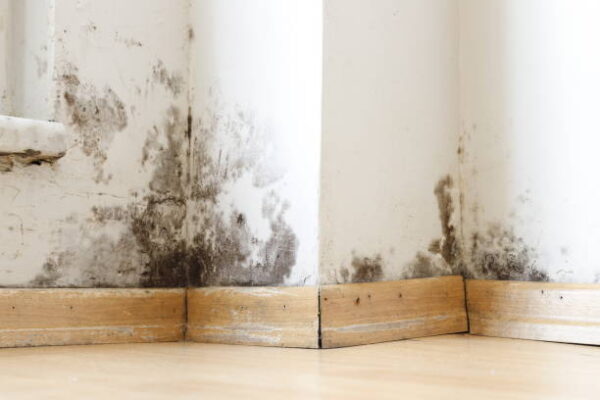As several state governments and the Nigerian Meteorological Agency have sent serious warnings of imminent flooding nationwide, TVC has taken it upon itself to create awareness of another major danger Nigerians might not consider as important, but which equally threatens the health of homeowners in the comfort of their homes.
House mould refers to the growth of fungi on wet materials inside a residential building.
While mould exists everywhere in nature and plays a crucial role in breaking down organic matter, its presence indoors can be problematic, leading to property damage and potential health issues.
What is Mould?
Mould is a type of fungus that reproduces by releasing tiny, invisible spores into the air. These spores are always present in the air, both indoors and outdoors. When mould spores land on a surface with a food source and sufficient moisture, they can begin to grow and form a colony.
What Causes House Mould?
The single most important factor for mould growth is moisture. Mould can’t grow without it. Common sources of moisture that lead to mould include:
High humidity: Indoor humidity levels over 60% can create an ideal environment for mould.
Water leaks: Leaky roofs, pipes, or windows can saturate building materials.
Flooding: Water damage from floods, even if cleaned up, can leave behind enough moisture for mould to grow.
Condensation: Moisture from warm, humid air condenses on cold surfaces like windows, walls, and pipes.
Poor ventilation: Lack of air circulation in areas like bathrooms and kitchens can trap moisture.
Mould can grow on a wide variety of materials found in a house, including drywall, wood, insulation, carpet, fabric, and even dust.
Potential Health Effects of Mould Exposure
Mould exposure can affect people differently. The most common health effects are related to allergies and irritation. When people inhale or touch mould spores, they may experience:
Allergic Reactions: Symptoms can be similar to hay fever, including sneezing, a runny nose, red eyes, and a skin rash. People with mould allergies may have more severe reactions.
Asthma Attacks: In people with asthma who are sensitive to mould, exposure can trigger an asthma attack.
Irritation: Even in people without allergies, mould can irritate the eyes, skin, nose, throat, and lungs, causing symptoms like coughing and wheezing.
Serious Conditions: While rare, some individuals with weakened immune systems or chronic lung diseases can develop more serious infections from mould exposure.
Read Also
How to Spot Mould?
You can often identify mould by sight or smell.
Visible Growth: Mould can look fuzzy or slimy and appear in a range of colours, including black, green, or white. Look for discoloured patches on walls and ceilings in damp areas.
Musty Smell: A distinct earthy or musty odour is a strong sign of a mould problem, even if you can’t see the fungus.
Prevention procedures
In this article, TVC has put together how to control and prevent mould from ruining homes and posing a threat to our health.
Assess the Problem: Find the source of the mould and determine how widespread the damage is. Look for visible mould, water stains, and that tell-tale musty smell. This helps you decide if you need to call a professional.
Fix the Moisture Source: Mould cannot grow without water. Before any cleaning begins, you must stop the moisture problem. Repair leaks in pipes, roofs, and windows, and manage high humidity with dehumidifiers.
Prepare with Safety Gear: Protect yourself from inhaling mould spores. Put on a face mask (N95 respirator), safety goggles that seal around your eyes, and rubber gloves. Wear old clothes you can easily wash or throw away.
Isolate the Area: Contain the mould to prevent it from spreading. Seal off the affected room with plastic sheeting and duct tape, covering doorways, windows, and air vents. Turn off your air conditioning or heating to stop spores from travelling through the vents.
Remove Contaminated Materials: Mould that has grown on porous materials like drywall, carpet, and insulation is nearly impossible to clean. These materials must be cut out, sealed in heavy-duty plastic bags, and carefully removed from the home.
Clean and Disinfect Surfaces: For hard, non-porous surfaces like wood studs or concrete, use a stiff brush and a cleaning solution (water and detergent, or a commercial mould killer) to scrub away the mould. For more effective mould-killing action, a bleach solution can be used.
Dry Everything Thoroughly: After cleaning, the area must be dried completely. Use fans and dehumidifiers to ensure there is no lingering moisture. Any dampness can cause the mould to grow back almost immediately.
Vacuum the Area: After the area is dry, use a HEPA (High-Efficiency Particulate Air) vacuum to clean all surfaces. This type of vacuum is designed to capture and trap microscopic mould spores that may have become airborne during the cleaning process.
Apply an Encapsulant: Once the area is clean and dry, a professional might apply an antimicrobial or biocide spray. After this, a specialised sealant (or encapsulant) is used to cover any remaining stains and help prevent future mould growth.
Rebuild and Prevent: Replace the materials you removed (e.g., new drywall, flooring). To prevent the mould from returning, consider using mould-resistant products. Continue to monitor for leaks and manage your home’s humidity levels to maintain a mould-free environment.
TVC previously reported that the Nigerian Meteorological Agency (NiMet) has warned of heavy rainfall in Sokoto, Zamfara, Katsina, Kebbi and Niger States on Friday, with a risk of flooding and other weather-related hazards.
In a high-impact forecast issued on Thursday, the agency also predicted moderate to heavy rainfall in parts of Jigawa, Bauchi, Yobe and Kano states.
https://www.tvcnews.tv/nimet-warns-of-heavy-rainfall-flood-risk-in-northern-states/





